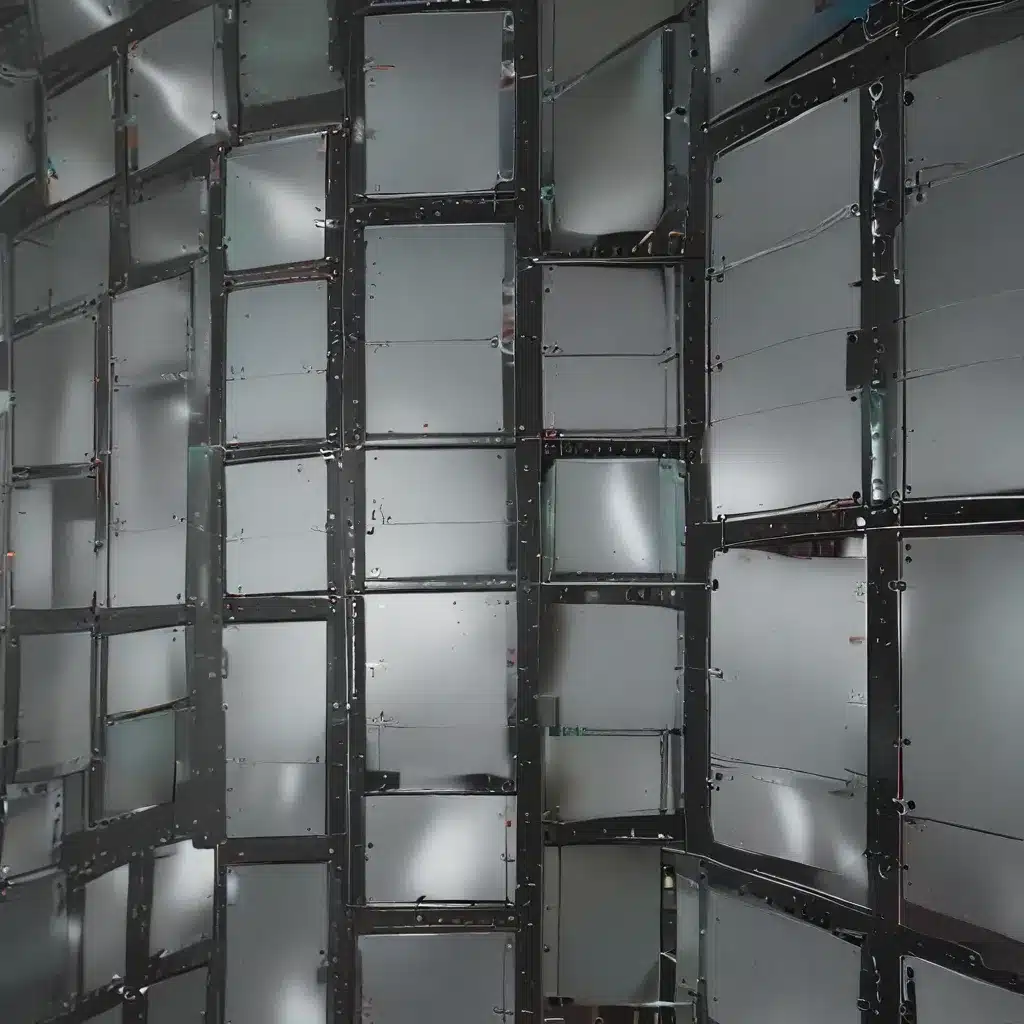
The Sun’s Complicated Dance
You know, I’ll never forget the first time I saw a solar panel in action. It was at my cousin’s place a few years back – he’d just installed this sleek, modern array on his roof, and let me tell you, the way those panels tracked the sun throughout the day, soaking up every last ray, was mesmerizing. It got me thinking, “There’s gotta be more to this solar stuff than meets the eye.” And boy, was I right.
As it turns out, the sun’s movement across the sky is a lot more complex than the old “rises in the east, sets in the west” adage. See, the earth has this inherent tilt and orbit pattern around the sun, and that means the sun’s position is going to look a little different depending on where you are on the planet. And that, my friends, is where the magic of solar panel orientation and tilt angles comes into play.
Mastering the Orientation
Let’s start with solar panel orientation – which is just a fancy way of saying which direction your panels are facing. Now, you might think, “Well, duh, they face the sun, right?” And you’d be mostly correct. But as it turns out, there’s a bit more nuance to it than that.
For those of us north of the equator, the ideal orientation is true south. Why true south, you ask? Well, it all has to do with the sun’s path across the sky. See, the sun spends the majority of its time in the southern half of the sky, so by facing your panels that way, you’re ensuring they get maximum exposure time and, in turn, maximum energy production.
According to Forbes Home, homes with solar panels facing directly east or west can see a 20% drop in energy output compared to those facing south. And let me tell you, that’s a lot of potential savings down the drain.
Now, I know what you’re thinking – “What if my roof doesn’t face south?” Well, the good news is that east or west-facing panels can still get the job done, they just might not be as efficient as their southern-facing counterparts. The key is finding that sweet spot, where you’re maximizing the amount of sunlight your panels can soak up throughout the day.
Perfecting the Tilt
Okay, so we’ve got the orientation down, but what about the tilt angle? This is where things can get a little tricky, but trust me, it’s worth the effort.
The optimal tilt angle for your solar panels is going to depend on a few factors – namely, your geographic location and the time of year. According to EnergySage, the general rule of thumb is to tilt your panels to a angle equal to or close to the latitude of your home. So, if you live in, say, New York (latitude around 41 degrees), you’ll want your panels tilted somewhere between 30-45 degrees.
But wait, there’s more! The sun’s position in the sky changes throughout the year, which means your ideal tilt angle will fluctuate as well. During the summer months, when the sun is higher in the sky, you’ll want to tilt your panels about 15 degrees less than your latitude. In the winter, when the sun sits lower, you’ll want to tilt them 15 degrees more.
I know, it sounds like a lot to keep track of, but trust me, it’s worth it. According to a study published in Science Direct, the optimal tilt angle can boost your solar panel’s energy output by 1-2% compared to a fixed, latitude-matched angle. And when you’re talking about the kind of savings solar can provide, every little bit counts.
Tackling Tricky Installations
Of course, no discussion of solar panel tilt and orientation would be complete without touching on the challenges that can come with actual installation. After all, not every roof is created equal, and sometimes, that perfect angle or orientation just isn’t in the cards.
Take steep roofs, for example. According to EnergySage, installing panels on a steeply pitched roof can actually increase the cost of the installation, since the crew has to work more carefully and may even need to rent extra equipment like scaffolding or bucket lifts. And let’s not forget about those pesky obstructions like chimneys, vents, and skylights – they can eat up valuable roof space and make it tough to get that ideal setup.
But don’t let these hurdles discourage you. The truth is, solar can still make great financial sense, even if your roof isn’t perfectly suited for it. Solar As Systems Inc. has a team of experts who can work with you to design a system that maximizes your savings, no matter the challenges your roof may present.
The Bottom Line
At the end of the day, solar panel orientation and tilt angles might seem like a complex topic, but I promise it’s not as daunting as it seems. By understanding the basics of how the sun moves across the sky and how that affects your panel’s energy output, you can ensure your system is set up for success.
And who knows, maybe one day you’ll be the one dazzling your friends and family with a solar array that tracks the sun like a professional dancer. Just don’t forget to give a shout-out to Solar As Systems Inc. – they’re the ones who can make that solar magic happen.


